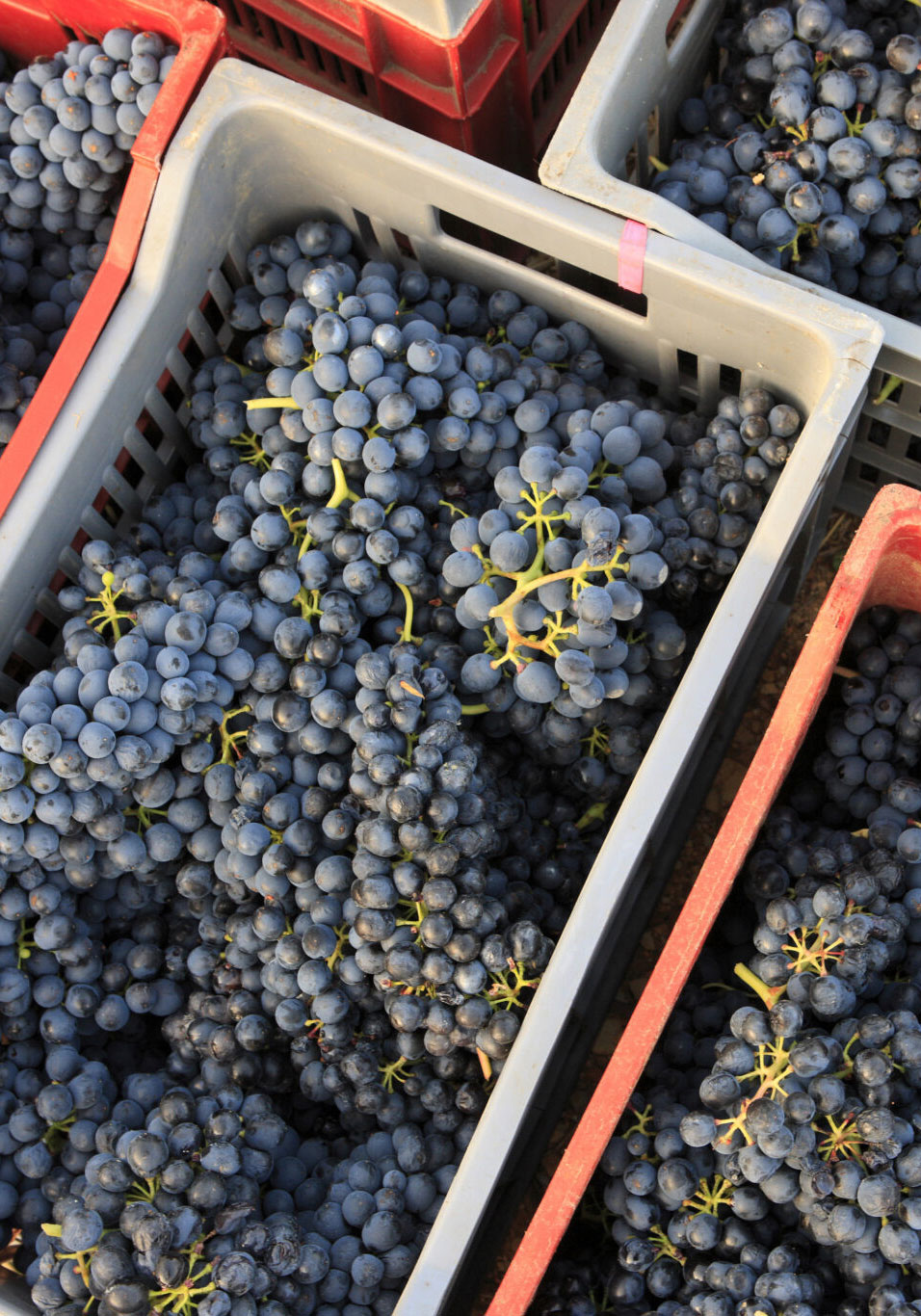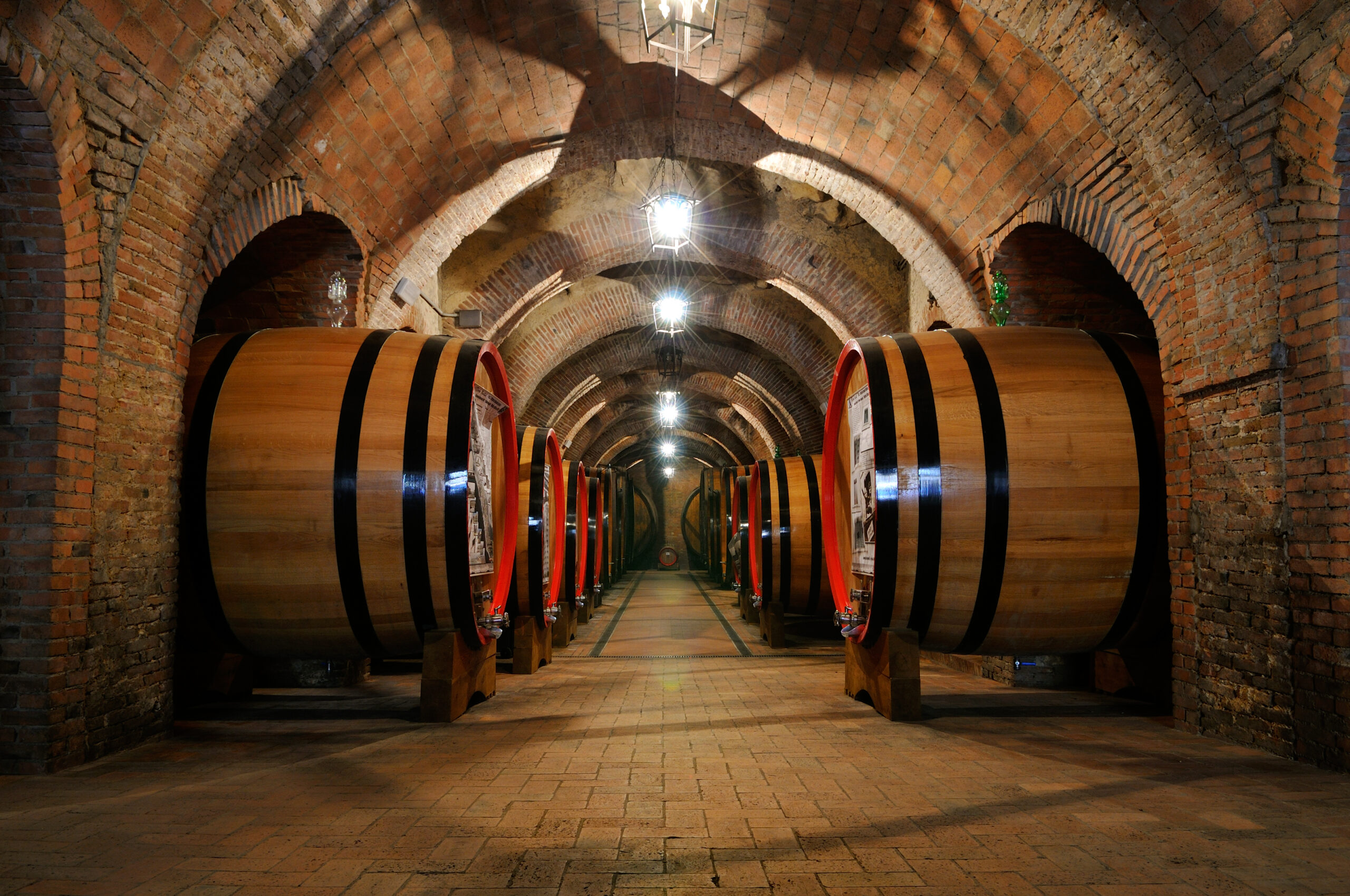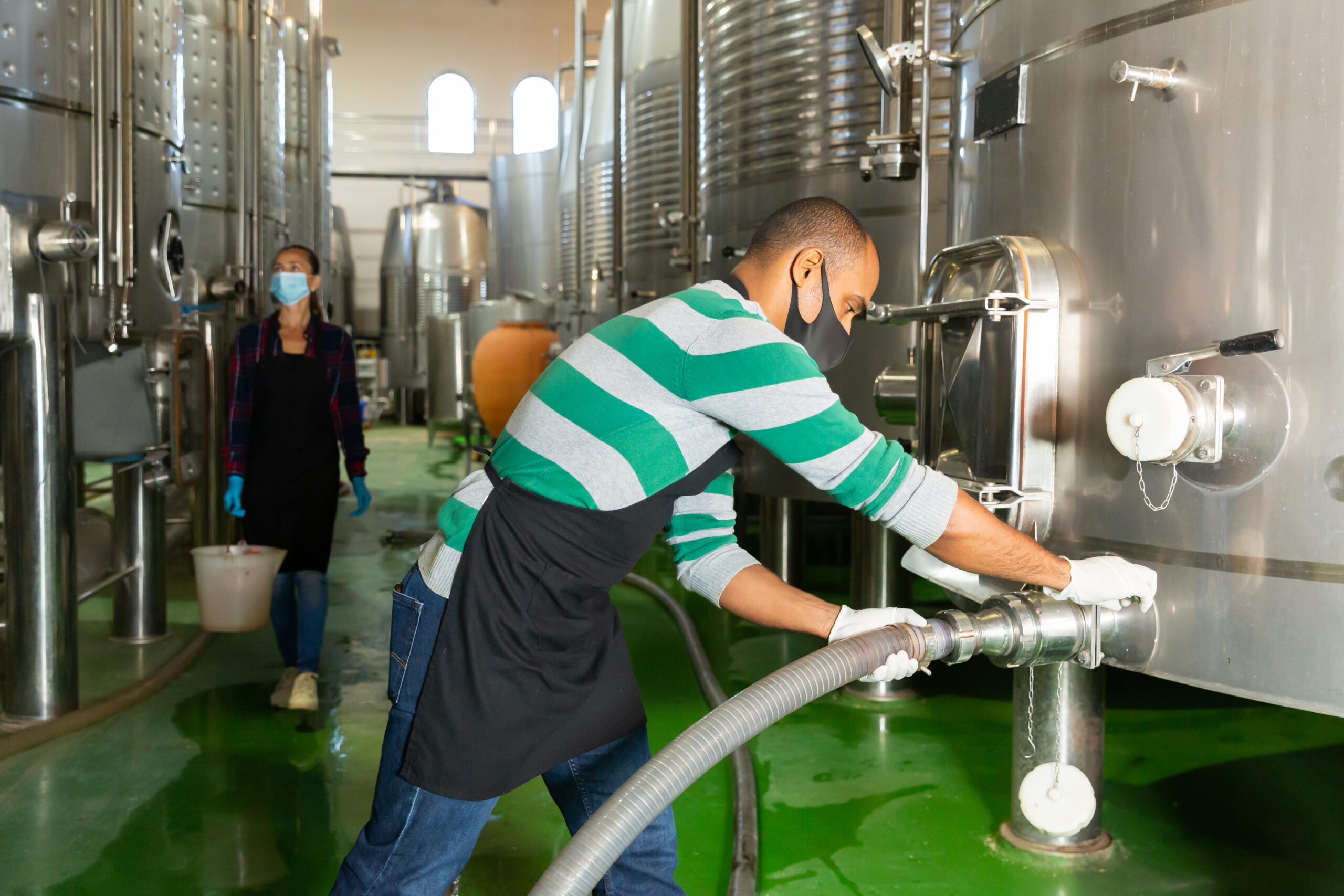VINIFICATION
Château La Borie produces prestigious red wines and a Cuvée of rosé wine with modern flavors (color and fruit) while retaining the specificities of Rhône Valley wines (supple but nevertheless present tannins). Quality research is a constant measured by the quantity of medals obtained.
Harvest
Fully mechanized harvesting generally begins at the end of September and ends in mid-October.
For each plot, the optimal harvest date is determined by the regular tasting of the berries by Jérôme Margnat.
Mechanical harvesting provides two advantages: the first of a qualitative nature and the second of an economic nature.

The reception of the grapes
Each grape variety is vinified separately.
Thanks to the hot and dry climate that often accompanies the mistral (dominant local wind), the sorting of the harvest is reduced.
A vibrating conquet receives the grapes which are transported to a harvest pump which distributes the 10 vinification vats.
Sulphiting
A sulfidoser is used to inject SO² directly into the distribution column. This allowed us to halve doses while improving protection against oxidation. We market bottles containing a total SO² dose of less than 50 mg/l (half the maximum dose of organic wines)

The vatting
Sugar is transformed into alcohol by the natural action of selected yeasts.
The cooling of the must, using a water/wine exchanger, begins as soon as it is put in the tank in order to begin fermentation with a maximum temperature of 21°C. Flags immersed in the vats (plates in which water circulates at 7°C) make it possible to control the fermentation temperature of the vats.
Pumping over is carried out twice a day.
Lors de chaque remontage, le moût traverse l’échangeur pour réguler la température afin d’asperger le chapeau de marc pour extraire les arômes, les tanins et la couleur. Lorsque la densité atteint 1030 nous laissons la température s’élever jusqu’à 31°C environ pour extraire des composés phénoliques intéressants.
La cuvaison dure une semaine minimum et se prolonge bien souvent jusqu’à 3 ou 4 semaines.
Devatting
We proceed to devatting when all the sugars have been transformed into alcohol and, when tasting, we begin to perceive an adequate presence of tannins.
The juice is separated from the pomace.
The marc joins the press.
The pressing
The marc is pressed using a pneumatic press which has the particularity of ensuring a delicate pressing.
Press wines are vinified separately.

Malolactic fermentation
The malic acid present in wine is transformed under the action of lactic acid bacteria into lactic acid.
Given the privileged climate we enjoy, the wines in the cellar are still at a high temperature (above 24°) which allows malolactic fermentation to start immediately.
In general, the fermentations are finished at the end of November.
Follow-ups and controls
As soon as we receive the must, we analyze it.
The first analysis provides us with the following indications: quantity of sugar which allows us to estimate the future alcoholic degree, PH, total acidity, SO2 dosage, assimilable nitrogen.
The following analysis gives us the following information: the alcoholic degree, the quantity of residual sugars, the total acidity, the volatile acidity.
Then each tank is analyzed regularly. Throughout the vinification we are in close contact with experts from the Suze la Rousse wine university.
Final assembly
The tasting of the berries, allowing the date of harvest to be determined, as well as the daily tasting of each vat allows Jérôme Margnat to memorize the evolution of the sensory profile of each vat.
Jérôme Margnat begins to imagine the assemblies in his head.
It is a period of mutual discovery between man and the wine that has just been born. Numerous assembly tests are carried out during the months of November and December.
We vary the proportion of each grape variety as well as the proportion of wines from pressing.
The final decision is made in December. The vintages are fixed, the man will no longer act, only time will do its job. The final stage will be bottling, which will take place later (between 6 and 12 months later).
Aging
Generic Côtes du Rhône cuvées are aged in vats. The aromas of red fruits are preserved. The wine, although structured, remains drinkable with round and supple tannins. Its consumption can occur quickly while offering aging potential.
Most of the Côtes du Rhône Villages cuvées are aged in vats.
- The very supple tannins are more sustained.
- The aromas are more complex.
- The color is deeper.
- Aging is prolonged.
- Consumption can start quite early but the aging potential is high.
Come and discover the vineyards of Château La Borie
Venez découvrir les vins du Château La Borie

